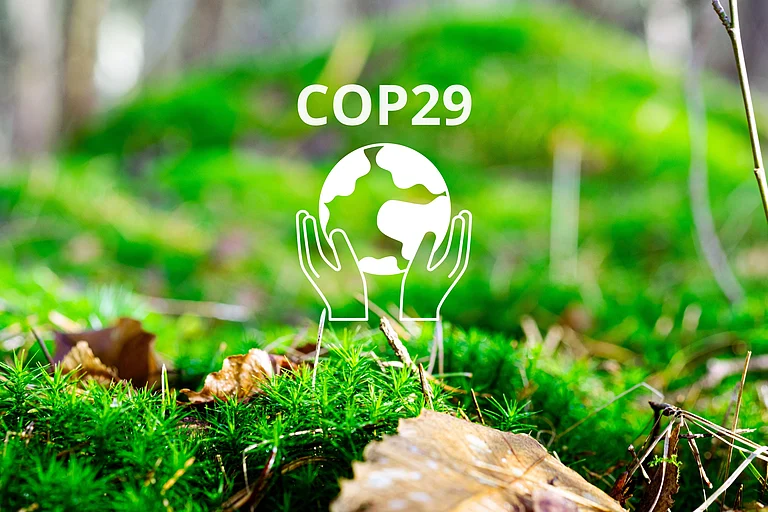By the late 20th century, scientists confirmed that human activities such as burning fossil fuels and cutting down forests were causing the Earth to heat up. This happens because gases like carbon dioxide trap heat in our atmosphere, creating what’s known as ‘the greenhouse effect’. This natural process is now out of balance because of human actions, leading to global warming.
In 1979, the World Climate Conference in Geneva marked the first significant international effort to address climate issues. In 1988, the Intergovernmental Panel on Climate Change (IPCC) was instituted by the United Nations and the World Meteorological Organisation to provide scientific assessments on climate change, its impact and future risks.
In 1992, the United Nations Framework Convention on Climate Change (UNFCCC) was adopted, marking a landmark global agreement recognising that climate change was a common concern for all humankind and requiring international cooperation. The UNFCCC was enforced in 1994, and the first COP was held in Berlin in 1995. The conference began an ongoing international dialogue aimed at controlling global warming.
COP policies determine how countries tackle climate change. These agreements then trickle down to local regulations, impacting everything from energy costs to industry practices. For example, commitments to phase out coal and invest in renewable energy directly affect electricity prices in our homes.

The Need for Urgent Action
Let us look at some climate-related statistics to highlight the urgency of taking action against climate change:
2023 was the hottest year on record, with temperatures 1.45 degrees Celsius above pre-industrial times.
Greenhouse gas concentration (carbon dioxide, methane, nitrous oxide) reached all-time highs in 2022 and continued to rise in 2023.
Ocean heat levels are at their highest in 65 years of monitoring.
Global sea levels hit a record high with the past decade seeing double the rate of sea-level rise compared to previous years.
Antarctic sea ice hit a historic low in February, shrinking by 1 million square km below the previous record.
Glacier loss in 2022–23 was the worst on record, with Switzerland alone losing 10% of its glacier volume in just two years.
Why COP is Critical
The alarming statistics about climate change highlight the urgency of action. If we do not take decisive steps now, we will face severe repercussions for our environment, economy and society that will ripple through generations.
In this context, COP becomes critical. Its outcomes extend far beyond the conference room—they affect us all. The call for immediate action becomes increasingly apparent as the climate crisis intensifies. The time to act is now, and the COP serves as a vital platform.
If we look at COP as an idea, it recognises that climate change is an emergency and that all countries must work together to tackle it. It plays a crucial role in preventing global warming from reaching dangerous levels.
Without international agreements and commitments like those made at COP, we risk more extreme weather, rising sea levels and environmental damage.
COP encourages nations to collaborate, ensures climate action is both proactive and coordinated and holds the countries accountable for their commitment to climate change. The following pages describe how decisions made at COP have a direct impact on people across the world.

Health & well-being, new markets
It can be easy to view the COP as a distant political event, with discussions and negotiations taking place far away from the realities of daily life. However, climate change impacts our everyday lives in myriad ways including our health and our businesses.
Improved heatwave resilience can protect low-income populations and outdoor workers, ensuring that extreme weather conditions do not adversely affect their livelihoods. Reduced heat-related health issues also mean fewer hospitalisations, promoting overall well-being.
Due to decreased pollution, people will experience better air quality and fewer health issues such as respiratory illnesses and allergies.
Green New Economy
The COP fosters growth in new markets, especially in green technologies such as renewable energy, electric vehicles and energy-efficient buildings.
As new markets emerge, consumers gain access to innovative products such as electric cars and energy efficient appliances.
Keeping the Old Economy Going
The COP also helps bring in adaptation funds. With more adaptation funds, businesses, especially in vulnerable sectors like agriculture, manufacturing and construction could invest in climate-resilient infrastructure.
As these funds roll in, they can be used to improve waste management systems, making buildings flood-resistant and improving the efficiency of supply chains. The transition will help protect businesses from extreme weather events and reduce daily disruptions.

Green jobs, upskilling
A surge in climate finance would likely lead to growth in sectors related to climate resilience, such as sustainable construction, disaster management, renewable energy, water conservation and agriculture.
Indian businesses might receive incentives or grants to train employees in new skills related to adaptation, such as renewable energy installation, disaster-preparedness and water-efficient technologies.
Creation of green jobs, particularly in rural and semi-urban areas where adaptation needs are more crucial will help these populations. Several upskilling opportunities for youth are also likely to arise.
Sustainable Agriculture
Indian agribusinesses could see opportunities in expanding the production of climate-resilient seeds, farm machinery for efficient irrigation and weather monitoring technologies. Consumers, particularly in rural areas who are dependent on agriculture, will benefit from more stable food supplies.
Reduced crop losses due to climate impacts would help stabilise food prices and ensure food availability, even during adverse weather conditions.
Commodity Prices
In the short term, businesses may pass on some costs related to adaptation investments to consumers. For instance, building climate-resilient infrastructure or adopting new technologies could result in higher prices for goods and services.
However, in the long term, adaptation measures can stabilise the supply chain and reduce the risk of climate-related disruptions. This will eventually lead to more stable pricing for consumers, especially in essential sectors like food, water and energy.

Energy costs, CSR and green products
The transition to renewable energy driven by COP leads to competitive pricing, encouraging companies to lower costs and pass savings to consumers. Low energy costs from renewable investments benefit consumers.
They enjoy reduced utility bills which finally leads to increasing disposable income. For example, installing solar panels for household electricity use can significantly cut costs.
Eco-Friendly Products
Regulations that evolve out of the COP can encourage businesses to innovate, promote sustainability and produce eco-friendly products, enhancing their market offerings.
Consumers enjoy diversification in green products and services, which allows them to make environmentally responsible choices in their daily lives.
Social Responsibility
Businesses will find opportunities for investing more in community-level adaptation projects like rainwater harvesting, afforestation or local disaster preparedness.
Companies can use their corporate social responsibility (CSR) funds for such projects. These would not only help communities but also strengthen the relationship businesses have with local consumers and governments.









 Just one email a week
Just one email a week